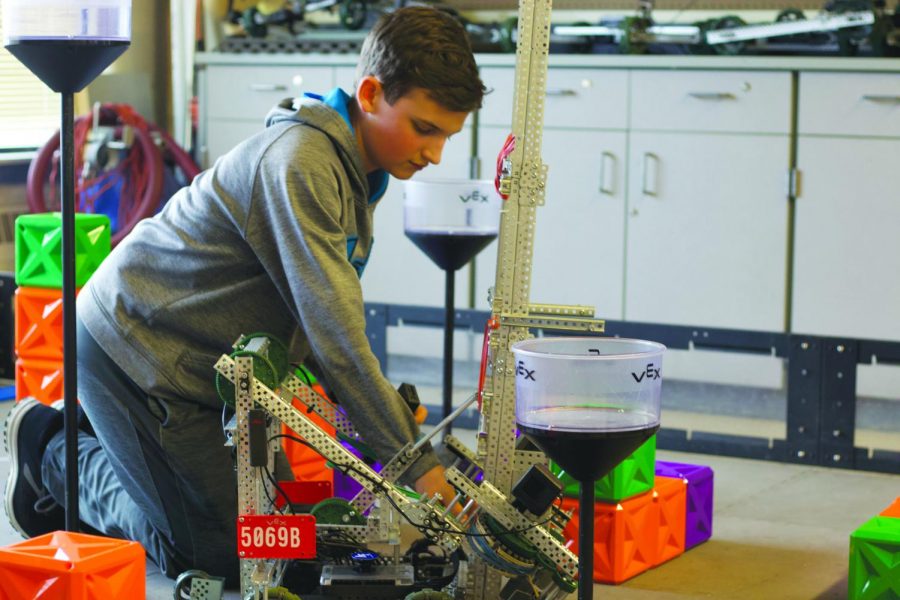From Club to Class
Robotics becomes a class next year, students get to explore engineering and programming
Freshman Patrick Stolinski makes adjustments to his team’s robot. Stolinski plans to take a Robotics class next year.
Just a few months ago, furious chatter and the whirring of various machines could be heard coming from room 1211 after school.
Now instead of after school, the activities done in the Robotics club will be taking place during the day as a class rather than a club.
In this club, students come together to design and create robots for worldwide competitions.
The class, however, will have two parts, Robotics A and B. In Robotics A, students will allow students to work with mechanical systems, motion, and programming. In Robotics B, students will expand on the skills learned in Robotics A and will be able to take it multiple times for course credit if they want to, which helps the students in the club. Students must take Robotics A before Robotics B as Robotics B is expanding on skills learned in Robotics A.
Industrial Technology teacher and robotics club sponsor Jeffery Brady is excited about the prospect of this club becoming a class.
“It will be a sufficient challenge for those who like problem-solving with machine components and are interested in engineering,” Brady said.
Brady is not the only person excited about this change. Students and club members are also looking forward to the transition from a club to a class.
“I’m really excited because we’re getting a class next year with more building time and have more time to do everything that revolves around robotics. It’s nice because we’ll be getting more attention from teachers and just people in general,” freshman and club member Patrick Stolinski.
The transition from a class to a club allows students to learn skills that are becoming more prevalent in the 21st century.
“Robotics education promotes critical thinking and problem-solving skills. Hands-on robotics gives students an opportunity to develop 21st-century skills. These are all needs that students should have an option to learn,” Brady said.
The transition is beneficial for both current club members as well as people interested in joining the club but may not have the time after school.
“It will be nice to have a standard time for students to meet. Meeting during the day allows for better collaboration time and giving students more personal time for other aspects of their lives,” Brady said.
Though there are many benefits to this evolution, there are also some drawbacks.
“As a class, we are only going to be available during a specific class period, it may not work with everyone’s schedule,” Brady said.
This shift will be overall beneficial to students interested in robotics and will aid in the development of skills and knowledge that are becoming more important as time goes on.


